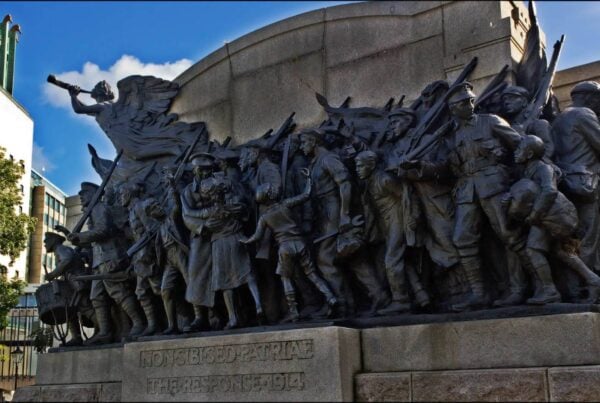Art is a universal language that has been a part of human history for thousands of years. From prehistoric cave paintings to modern digital art, art has evolved and changed over time, reflecting the cultural, political, and social values of the societies in which it was created. In this article, we’ll take a closer look at the history of art, from its earliest origins to the present day.
Table of Contents
Prehistoric Art
The earliest form of art dates back to prehistoric times, when early humans created rock art and cave paintings. These works of art were created using natural pigments and were often used for religious or spiritual purposes. They depict animals, humans, and abstract shapes and patterns. Some of the most famous prehistoric artworks include the cave paintings at Lascaux in France and Altamira in Spain.
Ancient Art
Ancient art refers to the art of the ancient civilisations of Egypt, Greece, and Rome. This period of art history is characterised by a focus on the human form, as well as the use of naturalistic and realistic techniques. The art of ancient Egypt, for example, was heavily influenced by religion and was often used to depict gods and goddesses. The Greeks, on the other hand, focused on the human form and created some of the most iconic sculptures in history, including the Venus de Milo and the Nike of Samothrace.
Medieval Art
Medieval art refers to the art of the Middle Ages, from the fall of the Roman Empire to the Renaissance. This period of art history is characterised by a focus on religion and the Church, as well as a shift away from naturalism and realism. Medieval art includes illuminated manuscripts, stained glass windows, and Gothic architecture. The art of this period was often used to convey religious messages and inspire devotion.
Renaissance Art
The Renaissance was a period of great cultural and artistic change that began in Italy in the 14th century and spread throughout Europe. This period of art history is characterised by a renewed interest in classical art and culture, as well as a focus on the individual and humanism. Renaissance artists, such as Leonardo da Vinci and Michelangelo, created some of the most iconic works of art in history, including the Mona Lisa and the Sistine Chapel ceiling.
Baroque Art
The Baroque period of art history began in the 17th century and is characterised by a focus on emotion, drama, and grandeur. Baroque art is characterised by its use of dramatic lighting, intense colours, and exaggerated forms. This period of art history includes the works of artists such as Caravaggio, Rembrandt, and Rubens.
Neoclassical Art
Neoclassicism was a movement in art that emerged in the 18th century as a reaction against the excesses of the Baroque and Rococo periods. Neoclassical art is characterised by a return to classical themes and motifs, as well as a focus on simplicity, order, and rationality. Artists such as Jacques-Louis David and Jean-Auguste-Dominique Ingres created works of art that celebrated the ideals of the Enlightenment and the French Revolution.
Romanticism
The Romantic movement emerged in the late 18th century and lasted until the mid-19th century. Romanticism is characterised by its focus on emotion, imagination, and individualism, as well as a rejection of the ideals of the Enlightenment. Romantic artists such as William Blake, J.M.W. Turner, and Eugène Delacroix created works of art that celebrated nature, emotion, and the power of the imagination.
Impressionism
Impressionism emerged in France in the late 19th century as a reaction against the traditional styles of painting and art that had dominated the art world for centuries. Impressionism is characterised by its use of light and color, as well as its focus on capturing the fleeting moments of daily life. Artists such as Claude Monet, Pierre-Auguste Renoir, and Edgar Degas created works of art that celebrated the beauty of everyday life and captured the mood and atmosphere of a moment.
Expressionism
Expressionism emerged in Germany in the early 20th century as a response to the increasing industrialisation and mechanisation of society. Expressionist artists sought to express their inner emotions and feelings through their art, using distorted forms, bold colours, and exaggerated lines to convey a sense of anxiety and alienation. Artists such as Edvard Munch, Wassily Kandinsky, and Ernst Ludwig Kirchner created works of art that were highly personal and expressive.
Cubism
Cubism emerged in France in the early 20th century and is characterised by its focus on the fragmentation of form and the use of geometric shapes. Cubist artists such as Pablo Picasso and Georges Braque sought to break down traditional forms and create new ways of seeing the world. Cubism was highly influential and paved the way for other modern art movements such as Futurism and Surrealism.
Comparison Table of Art Styles and Movements
To help illustrate the differences between some of the major art movements, here is a comparison table:
| Art Movement | Characteristics |
|---|---|
| Prehistoric Art | Natural pigments, religious/spiritual |
| Ancient Art | Focus on human form, naturalistic/realistic techniques |
| Medieval Art | Focus on religion/Church, illuminated manuscripts, Gothic architecture |
| Renaissance Art | Renewed interest in classical art/culture, focus on individual/humanism |
| Baroque Art | Emotion, drama, grandeur, dramatic lighting, intense colours, exaggerated forms |
| Neoclassical Art | Return to classical themes/motifs, simplicity, order, rationality |
| Romanticism | Focus on emotion, imagination, individualism, rejection of Enlightenment ideals |
| Impressionism | Use of light/color, focus on everyday life, capturing mood/atmosphere |
| Expressionism | Expression of inner emotions/feelings, distorted forms, bold colours, exaggerated lines |
| Cubism | Fragmentation of form, use of geometric shapes, breaking down traditional forms |
Conclusion
The history of art is a rich and diverse tapestry that reflects the cultural, political, and social values of the societies in which it was created. From the earliest prehistoric cave paintings to the cutting-edge digital art of today, art has evolved and changed over time, inspiring and influencing generations of artists and art lovers. Understanding the history of art can help us better appreciate the beauty and complexity of the art we see around us and help us better understand the world in which we live.








